
The Tomb of Pharaoh Seti I: A Missing Mummy, An Unexpected Tunnel and a Mummified Bull
The mummified face of Pharaoh Sety I (Seti I) still shows that he was not only extremely powerful but also very handsome during his lifetime. Sety’s tomb was brought back to the world on October 16, 1817 by the rebellious researcher Giovanni Battista Belzoni. It was an amazing find, but when the door was opened, destruction and confusion soon followed. It all began with the mystery of the missing mummy…
What Did Belzoni See?
When Belzoni entered the tomb, he had no idea what he had discovered. His confusion overcame him as a human mummy was nowhere to be found. He did, however, discover a mummified bull - so he decided that the tomb must have been created to honor Apis, a holy bull in Ancient Egypt. It’s important to remember that Belzoni wasn't a professional Egyptologist - the scientific field called Egyptology wasn’t even created until thirteen years later.
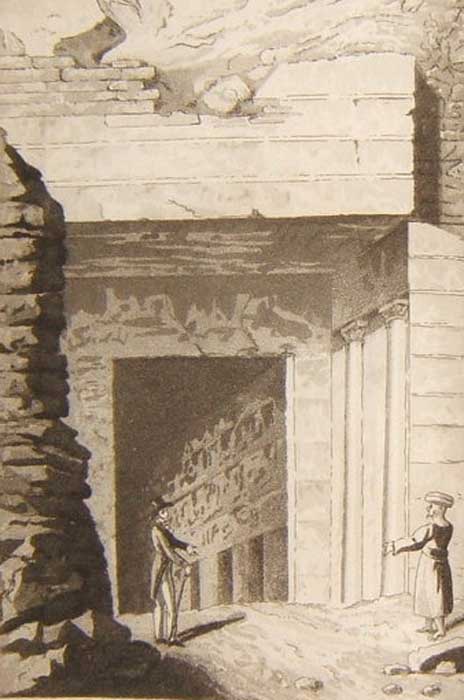
"Entrance to one of the Royal Tombs at Thebes" from a book by Édouard de Montulé (1821). (Public Domain) Egyptology was not created yet and most people had a different perception about how to visit ancient tombs in Egypt and elsewhere.
Belzoni didn't write anything about the tomb being blocked off or any closed doors, so it is impossible to guess what its state of preservation was when he entered it. It is known, however, that the tomb was looted and the mummy only survived thanks to priests who lived during the Third Intermediate Period.
- The Impressive Tomb of Pharaoh Seti I to Be Reborn in 3D
- Omm Sety – A British Woman Whose Life Was Lined by Reincarnation and Connected to a Pharaoh
- The stunning temple of Seti I in Abydos, Egypt
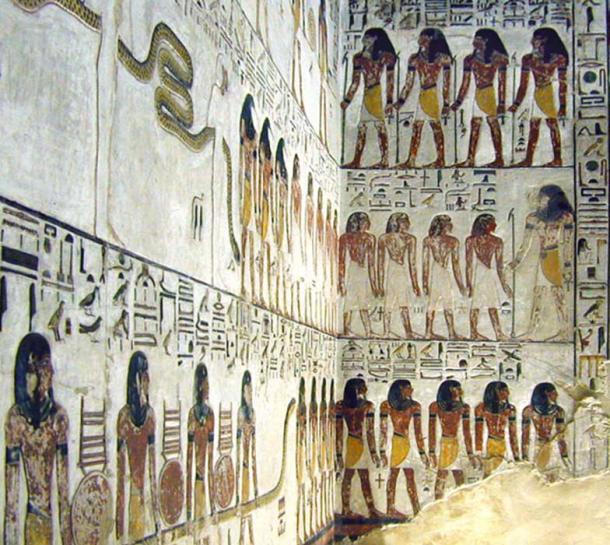
One of the decorated (and damaged) walls in the tomb of Seti I. ( Jean-Pierre Dalbéra/CC BY 2.0)
An Eternal Home Made for Sety I
The tomb located in the Valley of the Kings, known as KV17, is the longest tomb in the entire necropolis. It’s about 137 meters (449 ft.) long and is still recognized as an elaborately decorated monument from the times of Sety I and his son, Ramesses II.
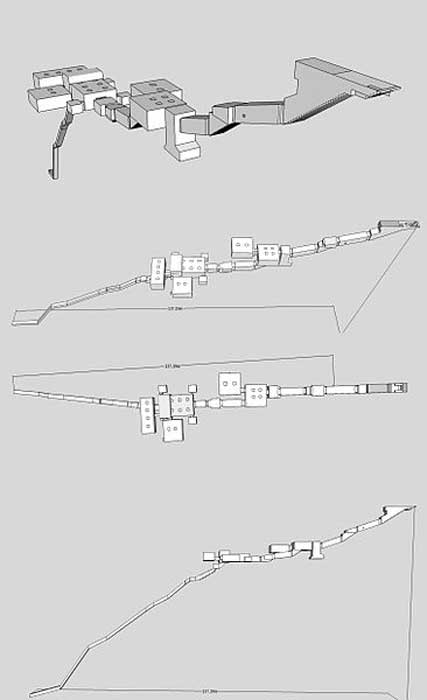
Isometric, plan, and elevation images of KV17. (R.F. Morgan/CC BY SA 3.0)
The most fascinating aspects of the tomb are the well-crafted decorations that brought antiquity to vivid life. The interpretation of the intricate wall paintings shows a different image from Sety I’s ancestors. According to Nicholas Reeves and Richard H. Wilkinson:
“The influence of Horemheb's transitional representations is still fell, through Sethos I'’s [Sety I’s] figures exhibit more subtlety modeled features, with the larger ears and smaller mouths which form the basis of the new Ramesside style. The decorative program established here is also followed fully or in part by every succeeding tomb through the rest of the valley's history. For the first time, the Litany of Re appears on the walls of the first two passages, with scenes from the Amduat also in the second passage and at lower points in the tomb. Previously, these works had appeared only in the burial chambers of the royal tombs, and are evidently now given new symbolic emphasis.”

Decorations in KV17, Seti I's tomb. (Jean-Pierre Dalbéra/CC BY 2.0)
The opening of the mouth ceremony in the lower passage looks very much like the one depicted in the tomb of Horemheb. Moreover, other parts of the tomb were also decorated with rich and detailed paintings.
- Remains of a 7,000-Year-Old Lost City Discovered in Egypt
- Isis, An Egyptian Goddess Who Spread Her Wings Across Europe
- The Abydos King List is a trove of information, preserving the identities of 76 kings of ancient Egypt
Sety I’s Original Burial Chamber
Sadly, the tomb was heavily damaged by researchers during the 19th century. The pharaoh’s sarcophagus was removed in the 1820s to become part of a museum collection in London. Priceless decorations gracing the walls, ceilings, pillars, etc. were also damaged by Jean-Francois Champollion, who explored the tomb during 1828-1829. He removed a wall panel in one of the tomb's corridors. Other wall paintings were taken by a German research team in 1845. The beautiful images that were stolen from the tomb’s walls are now parts of elite museum collections in Berlin, Paris, and Florence, amongst other locations.

Seti I’s sarcophagus, Sir John Soane’s Museum, London. (© Sir John Soane’s Museum, London)
The funerary equipment was still inside the tomb when Belzoni entered it. Of course, the precious metals and stones were soon pocketed, but many other things, like the wooden furniture and other objects which didn’t catch his eye, were left inside the tomb. As the wood was corroded and the other items were unlikely to fetch a good price, Belzoni took little interest in them.
An Unexpected Tunnel
In tomb KV17, researchers found a weird and unexpected tunnel which sinks deep underground beneath the burial chamber. This is one of the major puzzles related to Sety I’s tomb today. Could it lead to another burial chamber? An interesting feature found in the tomb’s decoration are cenotaphs, which can be translated to read “empty tomb.” The writing was likely seen as way to protect the pharaoh’s remains. This was a very important part of ancient Egyptian religion, as the deceased’s body had to be saved, otherwise, the person wouldn't be able to stay alive in the afterlife.
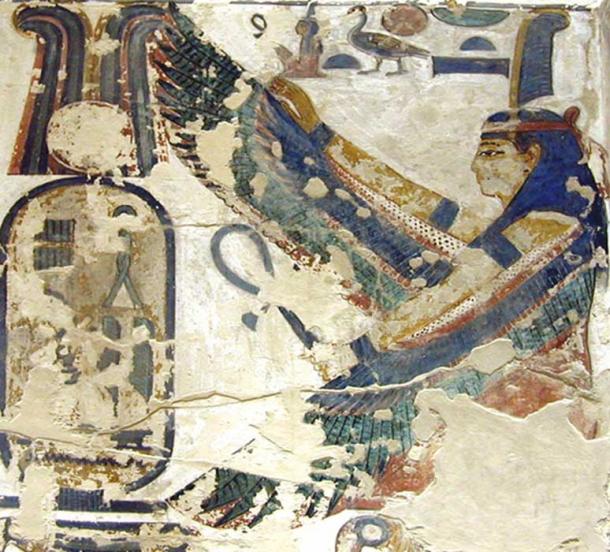
Decoration inside Seti I’s tomb. (Jean-Pierre Dalbéra/CC BY 2.0)
Returning to the tunnel, it was probably meant to reach groundwater - creating a symbolic link between the pharaoh’s burial and the myth of the tomb of Osiris. In royal tombs, the cenotaph was placed on a false sarcophagus on an ''island'' surrounded by water. It was associated with the original forces of creation and the myth of Osiris. But for Sety I, his most famous cenotaph is in his temple in Abydos.
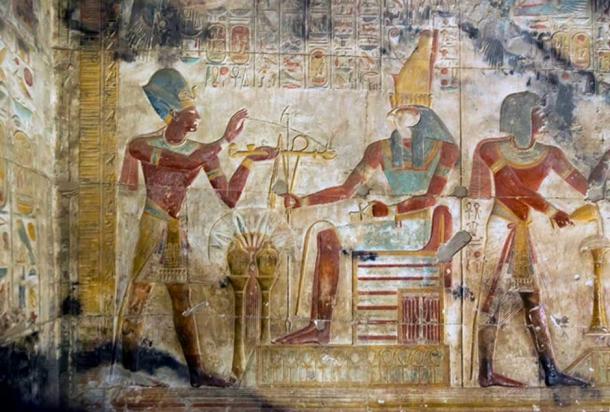
Depiction of Seti I in front of Horus in Seti I’s temple in Abydos. (kairoinfo4u/CC BY NC SA 2.0)
The King Reveals His Face
Sety I’s mummy was eventually discovered in the famous cache DB320. The pharaoh’s body had been taken out of his tomb and located in a hidden place to protect his remains. He was buried once again with several other famous rulers of Kemet (an ancient name of Egypt). His mummified body was neatly prepared and the mummy was covered with a yellow shroud. However, tomb looters had messed with his bandages and smashed his abdomen. Worse still, Sety’s head was separated from the rest of his battered body. Fortunately, his face remained untouched. Now, the remains of Sety I rest among other royal mummies in the Cairo museum.
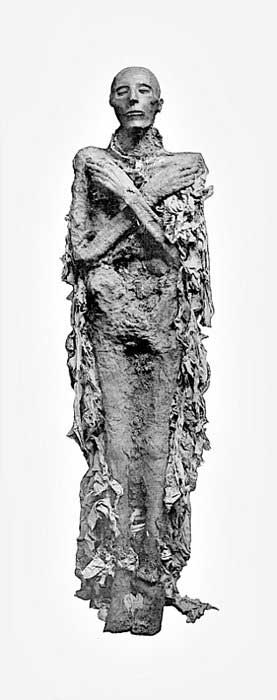
Mummy of Pharaoh Seti I. (G. Elliot Smith/Public Domain)
Sety I’s tomb is like a puzzle of ancient Egyptian symbolism. Looted and damaged, it is still one of the most remarkable examples of ancient Egyptian wall painting. Unfortunately, the shoddy work and previous damages made by ''iconic archaeologists'' of the 19th century had a lasting impact. Their disregard for preservation led to several of the tomb’s walls collapsing or cracking during archaeological work in 1950s and 1960s.

Damage on the walls of the tomb KV17. (Jean-Pierre Dalbéra/CC BY 2.0)
Top Image: Copy of a wall painting from the tomb of Seti I. Source: Public Domain
References:
Jimmy Dunn writing as Mark Andrews. The Tomb of Seti I, Valley of the Kings, Egypt. Available at:
http://www.touregypt.net/featurestories/seti1t.htm
Nicholas Reeves, Richard H. Wilkinson, The Complete Valley of the Kings, 2008. KV17, available at:
www.thebanmappingproject.com/sites/browse_tomb_831.html
Dariusz Sitek. KV17, available at: http://www.narmer.pl/kv/kv17en.htm















Comments
Has anyone else noticed there never seem to be any carbon smudge traces from torches to provide light in the tombs during construction and doing the artwork? Pretty hard to do all that in the dark!! Either great care was taken to remove any smudge marks completely so there isn't any trace of them at all, or the Egyptians had some other source of lighting.
History is nowhere near as well known as we think it is.
The tomb of King Stei I is one of the most amazing tombs in the valley of the Kings in the west Bank of Luxor.
For many years after specialized restoration and conservation projects in two of the most beautifully decorated tombs of ancient Egypt, Tomb of Seti I (KV17) in the valley of the Kings and tomb of Nefertari (QV66) in the valley of the Queens, were closed for public with exception for private visits for nearly 3000USD for up to 10 persons.
The ministry of antiquities decided to open the two tombs of the father and wife of Ramses II to public